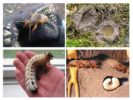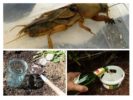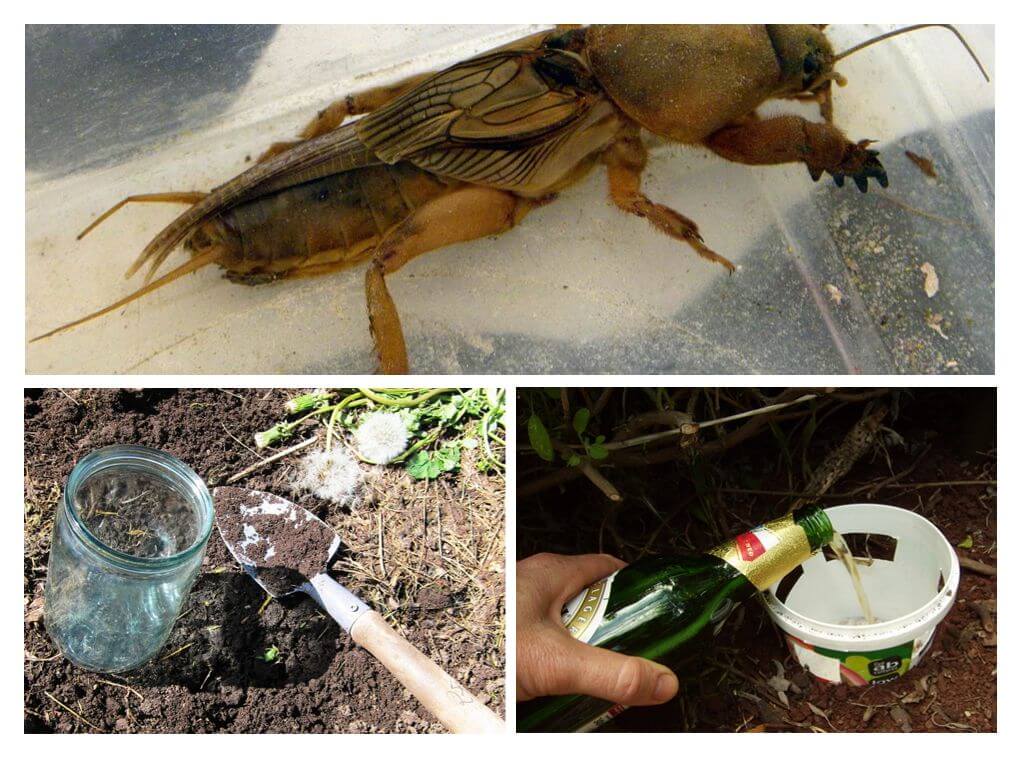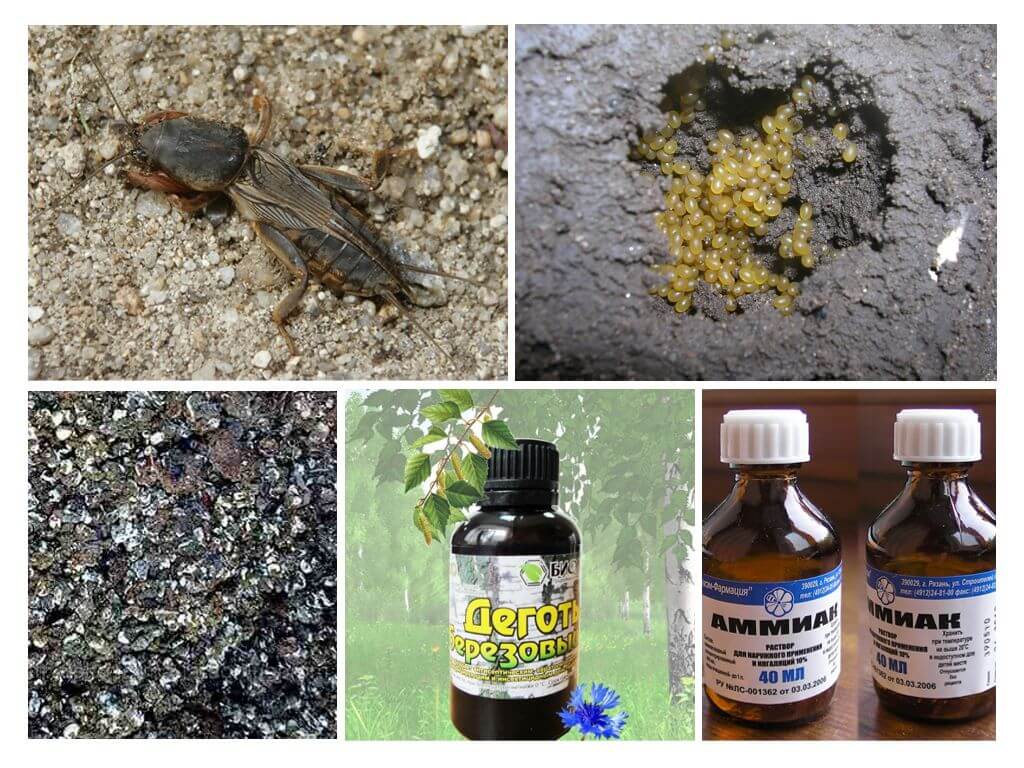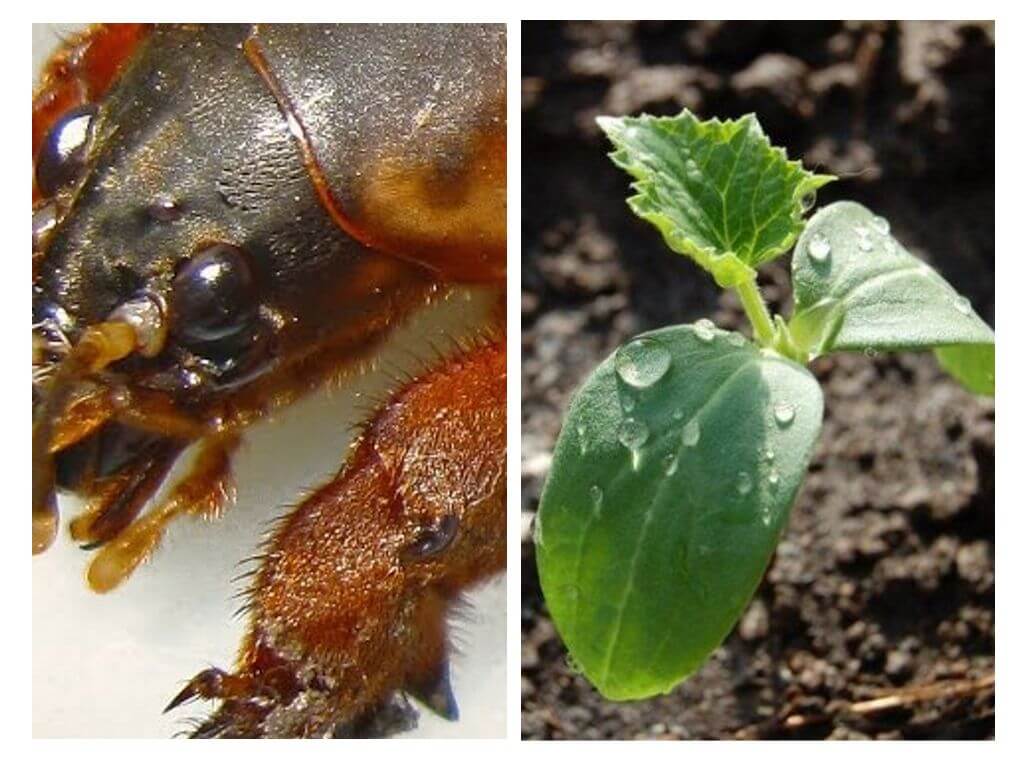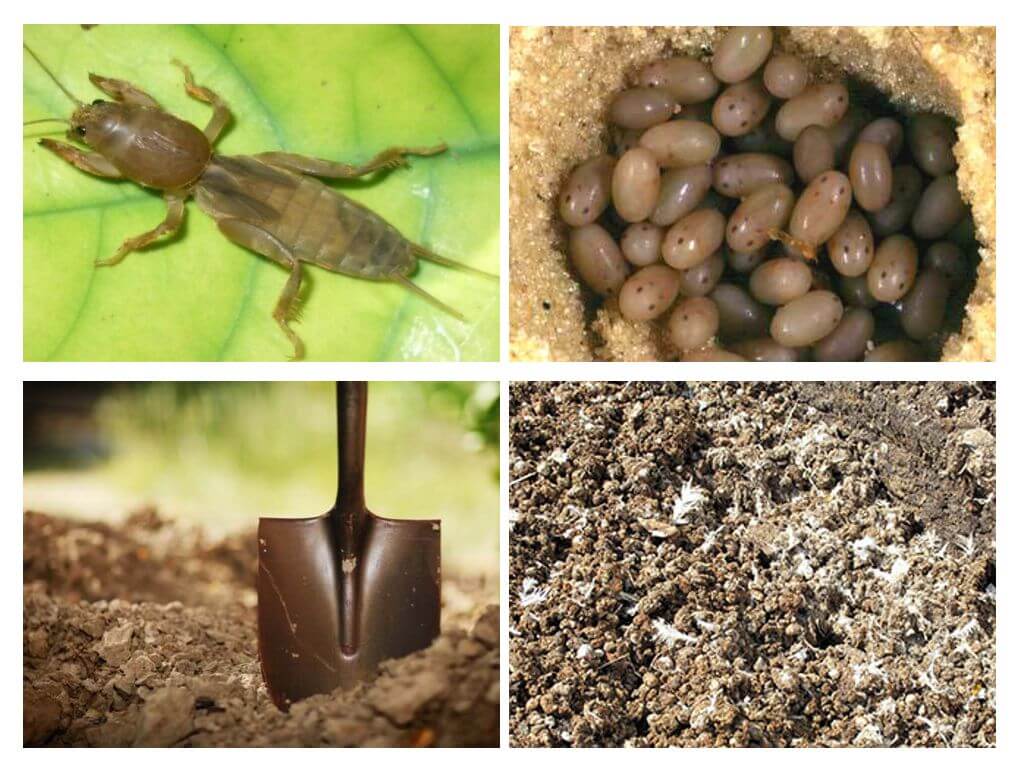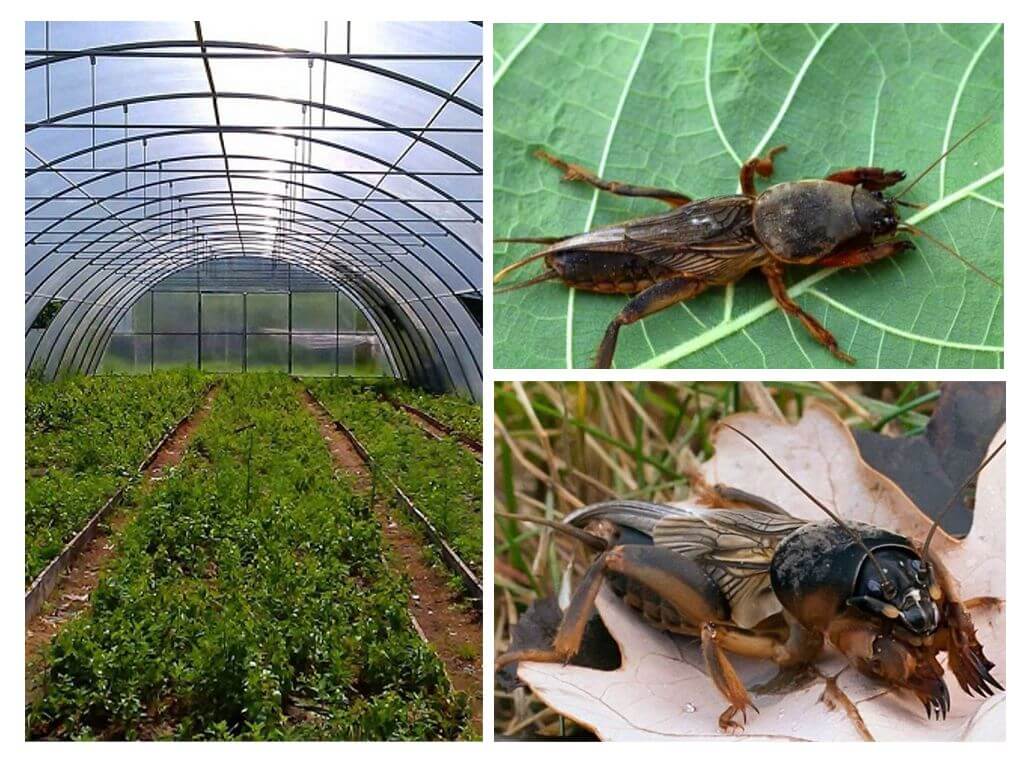- Medvedka and its housing
- Fighting the Bear
Medvedka spends almost her entire life underground. It comes to the surface in the dark, when the air temperature is kept above 12 ° C. Able to fly high enough rising in flight 5 m above the ground. Swims well, which allows you to safely overcome puddles, to escape from flooding. You can’t detect a bear during the day without much effort, but you can suspect the presence of a nest. There are several surefire ways to catch a bear in the garden.
Pest housing features
Medvedka’s nest is a unique building with numerous passages, exits, windows, and ventilation system. The tangled network is located at a distance of 15 cm from the surface of the earth. In the deepest place is a nest with eggs.
The female grows up about 2 years, the life expectancy of the formed individual is 1 year. The nymph lives at a depth of 15 cm. Individuals are selected outward at the end of the last molt when the genitals are formed. Mating occurs on the surface of the earth. It takes a few days. After that, the fertilized female is taken for the construction, arrangement of new housing.
The main part of the shelter the little bears looks like a rectangle. Numerous spiral courses depart from it, 4 exits from different sides. This provides a complete microcirculation of air, heat. So that the plants do not obscure the nests, the female gnaws the roots. After a while, the culture begins to dry.
On a note!
In one clutch there are about 500 eggs. Under favorable conditions - high humidity, warm air, warm earth, larvae born 2 weeks later. For some time they are defenseless, blind, unable to move. After the first molt, they become similar to an adult, but smaller in size.
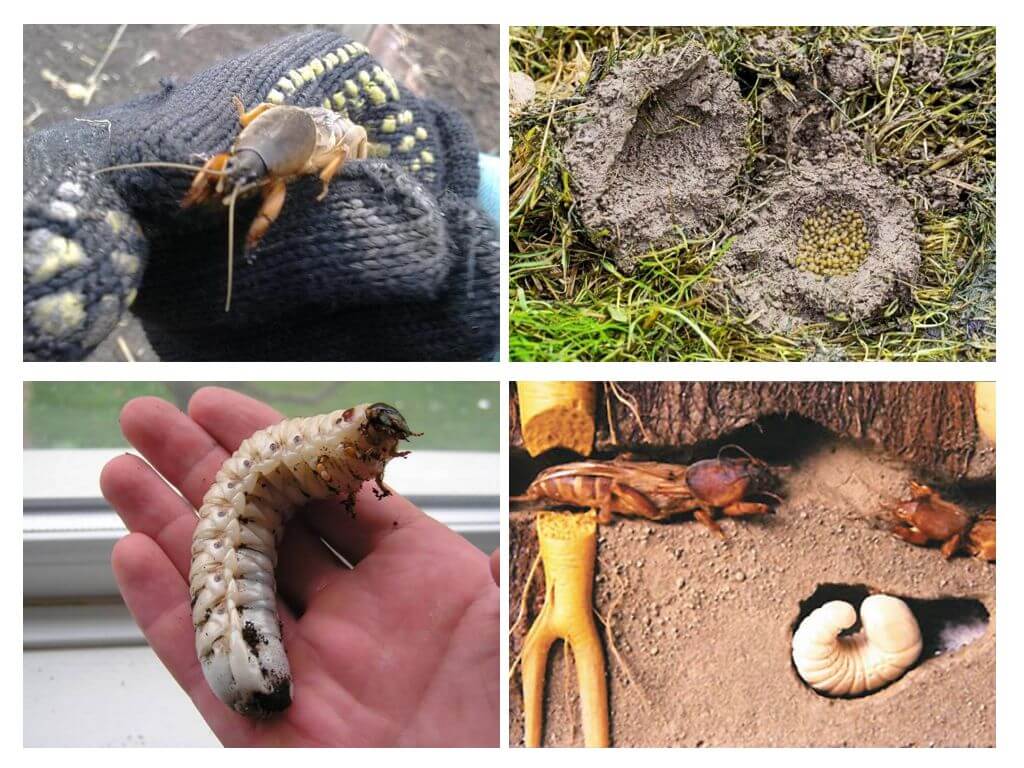
Successful nest search
You can find the nest of the bear by special signs.
- The death of plants, especially seedlings. Since the active formation of nests by females occurs in May-June. It is possible to determine that the plant died from a pest, and not from weather factors, by the state of the root system. The roots will be damaged. The first thing you need to pay attention to is the place of dried plants. You need to examine the area in close proximity to find the pest and try save seedlings.
- Medvedka provides a free flow of oxygen, heat to its offspring. You can detect the nest through holes on the soil surface in several places. This will be the entrance to the abode of the pest. Tunnels can be located up to 50 cm in depth, but egg laying is closer to the surface - not deeper than 15 cm.
- Pay attention to the grooves on the soil surface. A bear crawls at night, traces remain in the morning. There should be a hole in the immediate vicinity.
On a note!
With the onset of cold weather, insects go into the ground to a depth of 2 m, they successfully winter there. It is impossible to find a bear at such a distance. They can settle for the winter in a heap with compost. When looking for insect housing in the fall, you need to check the pits where the manure is put. Most of the time, the bear lives at a depth of 20 cm from the top layer of the earth.
Methods of struggle
There are various ways to help. fight the pest. You can catch a bear at any time of the day, but the insect comes out only after dark.
Traps
In the place where the pest lives, build holes with baits. Small holes are dug at a depth of 15 cm from the soil surface. Moisturize, fill with porridge from boiled rice, pearl barley. Cover with a piece of linoleum on top so that sunlight does not penetrate. Bears are caught early in the morning. By 9 o’clock the soil warms up, the insect rises to the top, smells, crawls in cooked trap. To catch a pest, one must act quickly. As the bear hears rustling, it quickly hides in a mink. Or insert a bottle with a cut-off neck into the pits. Then the pest will not be able to quickly hide, but if you do not check the trap, the insect can get out of the horizontally installed bottle.
Beer bottle
You can catch a bear with bottles of beer. A shallow hole is dug in the ground, a plastic liter beer bottle is dug in at a 45 degree slope. Pour about 100 ml of beer. The slope is needed so that the "captive" could not get out. Cover the hole with the bottle with a sheet of plywood, linoleum, iron to create twilight. Checking the trap daily is optional. About 12 insects are placed in one bottle. A great option for country gardens. The question is how to remove them from the tank and can the bears bite?
Bottle of honey
You can catch cabbage on honey. Dig a bottle into the ground at an angle. Lubricate the neck with honey, pour a little inside. So that the neck of the bottle does not fall asleep, lay a small piece of linoleum. Wells are covered with the same material.
On a note!
If there are no bears in the trap, but traces of presence are detected, holes in the ground are visible, water with powder should be poured there. From the soap base, the pest dies, swims out of the mink.
Catching a bear in the garden with a bottle is one of the most effective options. For prevention, loosen, dig up the soil. When planting, sprinkle soil crushed eggshell, toss a clove of garlic into the holes, plant marigolds, chrysanthemums between the beds with root crops.
In addition to these, there are many more funds from the bear in the garden which are quite effective and reliable.
